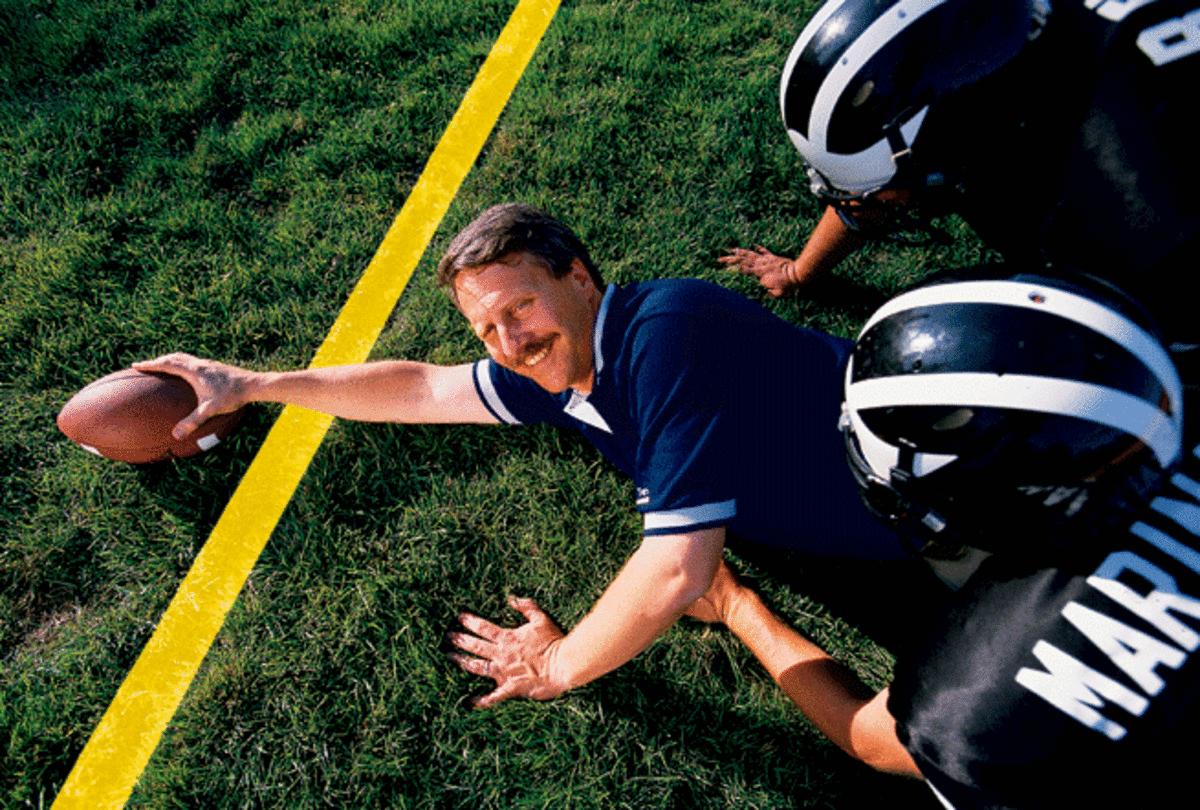The story behind football's innovative yellow first down line


Meanwhile, the whole project was kept confidential. Neither we nor ESPN wanted to say anything in order to preserve the element of surprise. We also did not want to announce it in case the feverish development effort did not make the start of the season.
As the preseason games began, we took our truck on the road, parked it next to the ESPN trucks and secretly began to test the system. There were, as everyone expected, bugs at the outset that had to be corrected. The biggest issues concerned the timing of the coordination with the broadcast feed.
The last ESPN preseason game in 1998 was in Kansas City. We hoped that would be a final dress rehearsal and if all went went we would get a green light from ESPN to launch the next weekend for the season opener. We created a separate feed of the game, coming into an ESPN trailer, which contained the line.
We all watched it intently throughout the game. It was not perfect, but it looked very good. The only issue was a slight jitter. When the game ended, we huddled with Drake to discuss the plan.
Some of us felt that it was good enough to go to air with, and its value would overcome anyone even noticing the jitter. We also obviously did not want to miss the opening weekend. Stan Honey said that the engineers could get rid of the jitter, but it would require a few weeks in the lab.
Drake wanted it to be perfect, and he felt that it was worth missing the season opener in order to nail it, and he was right. Stan's team took the system back to Mountain View and made the correction. Two weeks later we tested it again, and it was steady as a rock. We were a go for Sunday night, Sept. 27, 1998 in Baltimore for the Ravens against the Bengals.
Three days before the game, ESPN held a press briefing to announce the introduction of the yellow line. There was a small amount of skepticism from writers, but the general reaction was positive.
The telecast went smoothly, and the reviews were phenomenal. Even more telling, we heard from every network asking us about the line. We told them that we could provide it to them -- but not until the following season. That exclusivity clause extending through the playoffs came back to bite us. Fox wanted us to provide the line for the Super Bowl, which for a young company would have been an enormous step. But no matter what we offered (discounts, free games), ESPN refused to waive its rights.
We shared the Emmy award for technology with ESPN, and within several years two things happened -- the first was that the size of the system shrunk from a 48-foot, equipment-filled truck to racks about the size of four card tables that could be shipped to each venue in packing cases. With time to work on the system, the team was able to configure it in much more efficient ways, and we did not need the extensive backup equipment we hauled around that first season.
The second thing that happened, of course, was that every NFL and college telecast soon included the yellow line (the majority of telecasts still use the Sportvision technology, but there are two other companies providing the line for some games). And the line proved to be so accurate that the league removed the requirement that networks fade out the line as the referee spotted the ball.
Stan Honey, Jerry Gepner and I have heard from a lot of people over the years about the line. Among the most common comments were from men saying that it had made the game more understandable to their wives and girlfriends, and from fathers saying their children kept looking for the line on the field when they attended games. And there are people who still think it's done with lasers or disappearing paint.
Over time, Sportvision introduced many new technologies. Some, such as the ESPN K Zone and the NASCAR tracking system, were very well received. But none ever rivaled the universal enthusiasm that greeted the yellow line.
